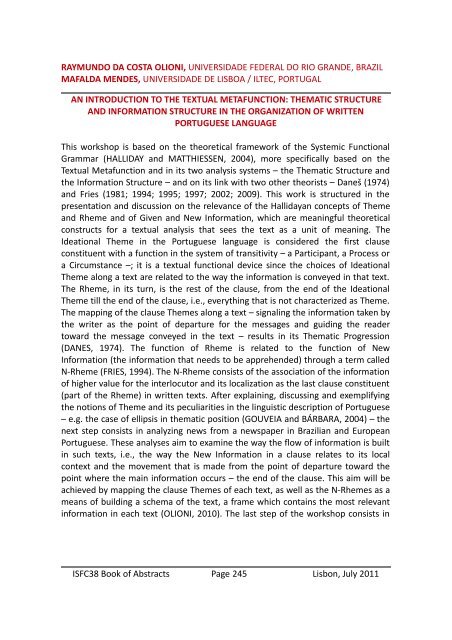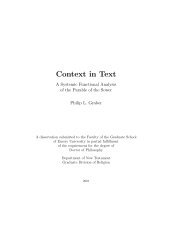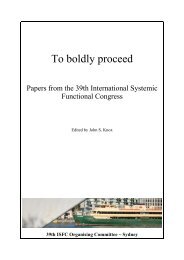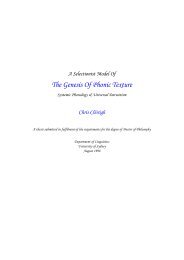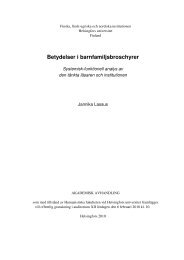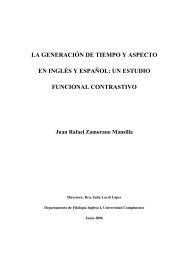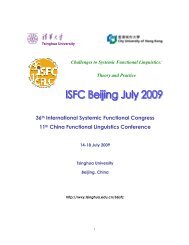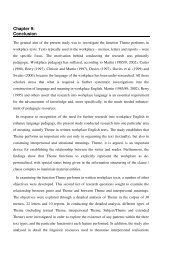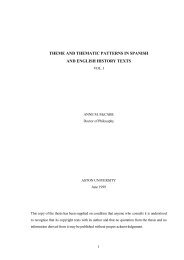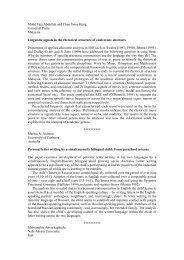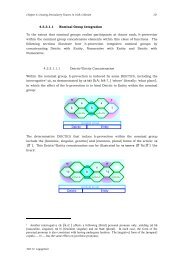Abstracts - Faculdade de Letras da Universidade de Lisboa
Abstracts - Faculdade de Letras da Universidade de Lisboa
Abstracts - Faculdade de Letras da Universidade de Lisboa
- No tags were found...
You also want an ePaper? Increase the reach of your titles
YUMPU automatically turns print PDFs into web optimized ePapers that Google loves.
RAYMUNDO DA COSTA OLIONI, UNIVERSIDADE FEDERAL DO RIO GRANDE, BRAZILMAFALDA MENDES, UNIVERSIDADE DE LISBOA / ILTEC, PORTUGALAN INTRODUCTION TO THE TEXTUAL METAFUNCTION: THEMATIC STRUCTUREAND INFORMATION STRUCTURE IN THE ORGANIZATION OF WRITTENPORTUGUESE LANGUAGEThis workshop is based on the theoretical framework of the Systemic FunctionalGrammar (HALLIDAY and MATTHIESSEN, 2004), more specifically based on theTextual Metafunction and in its two analysis systems – the Thematic Structure andthe Information Structure – and on its link with two other theorists – Daneš (1974)and Fries (1981; 1994; 1995; 1997; 2002; 2009). This work is structured in thepresentation and discussion on the relevance of the Halli<strong>da</strong>yan concepts of Themeand Rheme and of Given and New Information, which are meaningful theoreticalconstructs for a textual analysis that sees the text as a unit of meaning. TheI<strong>de</strong>ational Theme in the Portuguese language is consi<strong>de</strong>red the first clauseconstituent with a function in the system of transitivity – a Participant, a Process ora Circumstance –; it is a textual functional <strong>de</strong>vice since the choices of I<strong>de</strong>ationalTheme along a text are related to the way the information is conveyed in that text.The Rheme, in its turn, is the rest of the clause, from the end of the I<strong>de</strong>ationalTheme till the end of the clause, i.e., everything that is not characterized as Theme.The mapping of the clause Themes along a text – signaling the information taken bythe writer as the point of <strong>de</strong>parture for the messages and guiding the rea<strong>de</strong>rtoward the message conveyed in the text – results in its Thematic Progression(DANES, 1974). The function of Rheme is related to the function of NewInformation (the information that needs to be apprehen<strong>de</strong>d) through a term calledN-Rheme (FRIES, 1994). The N-Rheme consists of the association of the informationof higher value for the interlocutor and its localization as the last clause constituent(part of the Rheme) in written texts. After explaining, discussing and exemplifyingthe notions of Theme and its peculiarities in the linguistic <strong>de</strong>scription of Portuguese– e.g. the case of ellipsis in thematic position (GOUVEIA and BÁRBARA, 2004) – thenext step consists in analyzing news from a newspaper in Brazilian and EuropeanPortuguese. These analyses aim to examine the way the flow of information is builtin such texts, i.e., the way the New Information in a clause relates to its localcontext and the movement that is ma<strong>de</strong> from the point of <strong>de</strong>parture toward thepoint where the main information occurs – the end of the clause. This aim will beachieved by mapping the clause Themes of each text, as well as the N-Rhemes as ameans of building a schema of the text, a frame which contains the most relevantinformation in each text (OLIONI, 2010). The last step of the workshop consists inISFC38 Book of <strong>Abstracts</strong> Page 245 Lisbon, July 2011


